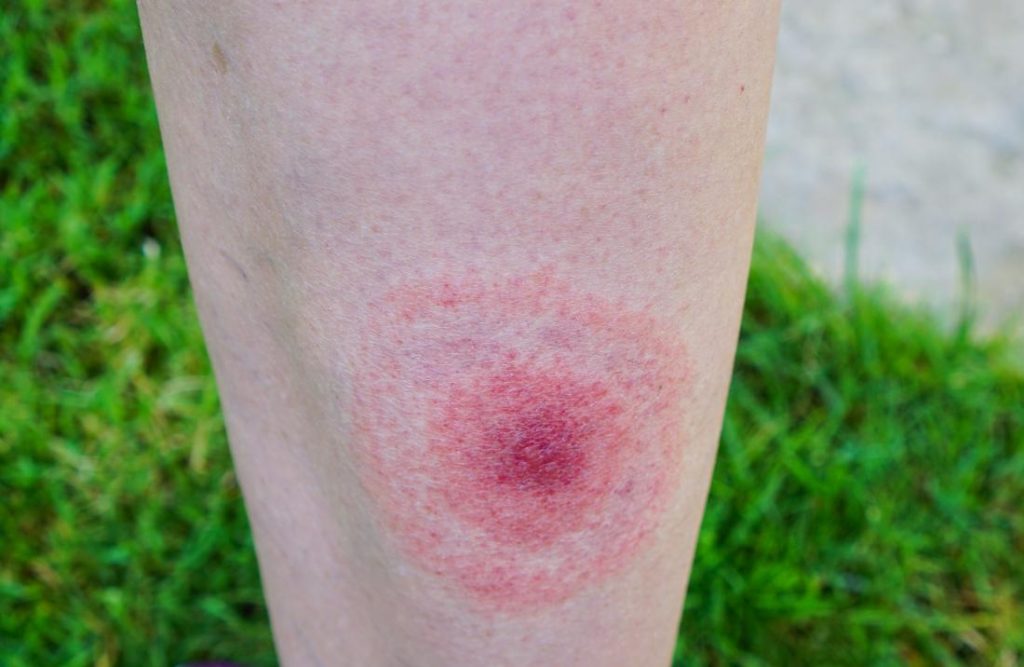Key notes on Post-Lyme disease syndrome and its symptoms?
The bacterium Borrelia burgdorferi is the source of the contagious illness Lyme disease. Humans contract B. burgdorferi when a black-legged or deer tick bites them. After consuming infected mice, birds, or deer, the tick contracts the infection.

For the infection to be transmitted, a tick must have been attached to the skin for between 36 and 48 hours. Many Lyme disease patients have no recollection of being bitten by a tick. The first case of Lyme disease was identified in 1975 in the Connecticut village of Old Lyme. In both Europe and the US, it is the most prevalent infection transmitted by ticks.
The likelihood of contracting this sickness is higher in people who reside in or frequently visit forested areas. Additionally, visitors to woodland areas who own domesticated animals are more likely to contract Lyme disease.
Symptoms of Lyme disease
Similar to a mosquito bite, a tick bite may appear as a tiny, irritating lump on your skin. This doesn’t imply that you have an illness spread by ticks. Many people won’t even be aware they’ve been bitten by a tick.
Different Lyme disease symptoms exist. They typically appear in phases. However, the phases can mix. Additionally, not everyone exhibits the typical early-stage symptoms.
Stage 1
Typically, the first signs of Lyme illness appear 3 to 30 days following a tick bite. There aren’t many symptoms present at this stage of the disease. Early localised disease is what we refer to as.
A rash is a typical Lyme disease symptom. However, it doesn’t always occur. The rash often begins as a single circle and slowly spreads from the tick bite site. The centre could grow distinct and resemble a target or bull’s-eye. Although the rash frequently feels warm to the touch, it normally isn’t uncomfortable or unpleasant.
Following additional stage 1 signs:
- Fever and headache.
- extreme exhaustion.
- stiff joints.
- Muscle discomfort and soreness.
- lymph nodes with swelling.
Stage 2
The Lyme illness might worsen if left untreated. Within 3 to 10 weeks of a tick bite, the symptoms frequently manifest. Stage 2 is frequently more severe and pervasive. Early-disseminated disease is the term for it.
Stage 2 symptoms could also include those from stage 1 and the following:
- many rashes on various body areas.
- neck stiffness or discomfort
- weakness in the facial muscles on one or both sides.
- irregular heartbeats are brought on by immune system activation in the heart’s tissue.
- Leg pain that originates in the back and hips and spreads.
- Hands or feet suffering from pain, numbness, or weakness
- edoema that hurts in the eye or eyelid tissues.
- Immune system activation that results in discomfort or visual loss in the ocular nerves.
Stage 3
You might experience additional symptoms in the third stage along with previous stage symptoms. Late-disseminated disease is the term for this stage.
The most prevalent condition of this stage in the US is arthritis in big joints, especially the knees. Long-lasting discomfort, edoema, or stiffness is possible. The signs could also come and go. Symptoms of stage 3 typically appear 2 to 12 months after a tick bite.
Acrodermatitis chronic atrophicans is a skin ailment that can be brought on by the kind of Lyme disease that is prevalent in Europe. The tops of the feet and the backs of the hands develop discoloured, swollen skin. The elbows and knees may also be affected. In more severe cases, tissues or joints could be damaged.
After a tick bite, this skin condition may appear months or years later.
Post-Lyme disease syndrome
Post-Lyme disease syndrome or post-treatment Lyme disease syndrome is what happens if you receive antibiotic therapy for Lyme disease but still suffer symptoms.
According to a 2016 New England Journal of Medicine report, this syndrome affects 10 to 20 percent of individuals with Lyme disease. The reason is still a mystery.
Mobility and cognitive abilities may be impaired by the post-Lyme disease syndrome. The main goal of treatment is to reduce suffering from pain and discomfort. Though most people bounce back, it may take months or even years.
Post-Lyme disease syndrome symptoms
The signs and symptoms of post-Lyme disease syndrome are the same as those that appear at the beginning of the illness.
These signs could consist of:
- fatigue
- inability to sleep
- hurting muscles or joints
- big joints, such as your shoulders, elbows, or knees, may experience pain or swelling.
- trouble focusing and issues with short-term memory
- speech issues
Lyme disease causes
Borrelia burgdorferi is the bacteria that causes Lyme disease (rarely Borrelia mayonii). People contract B. burgdorferi when a black-legged tick, sometimes referred to as a deer tick, bites them.
The Northeastern, Mid-Atlantic, and North Central regions of the United States are where infected black-legged ticks spread Lyme disease, according to the Centers for Disease Control and Prevention (CDC). The disease is spread along the US Pacific Coast by Western Black-Legged Ticks.
Is Lyme disease contagious?
There is no proof that Lyme disease spreads among humans. Furthermore, the CDC states that there are no cases of Lyme disease transmission through breast milk.
Bacteria carried by black-legged deer ticks cause Lyme disease, which is an infection. Despite the fact that these bacteria are present in bodily fluids, there is no proof that Lyme disease may be passed from one person to another while sneezing, coughing, or kissing.
Additionally, there is no proof that Lyme disease may be spread through blood transfusions or through sexual contact.
REFERENCES:
- https://www.healthline.com/health/lyme-disease
- https://www.cdc.gov/lyme/signs_symptoms/index.html
- https://my.clevelandclinic.org/health/diseases/11586-lyme-disease
- https://www.mayoclinic.org/diseases-conditions/lyme-disease/symptoms-causes/syc-20374651
For more details, kindly visit below.